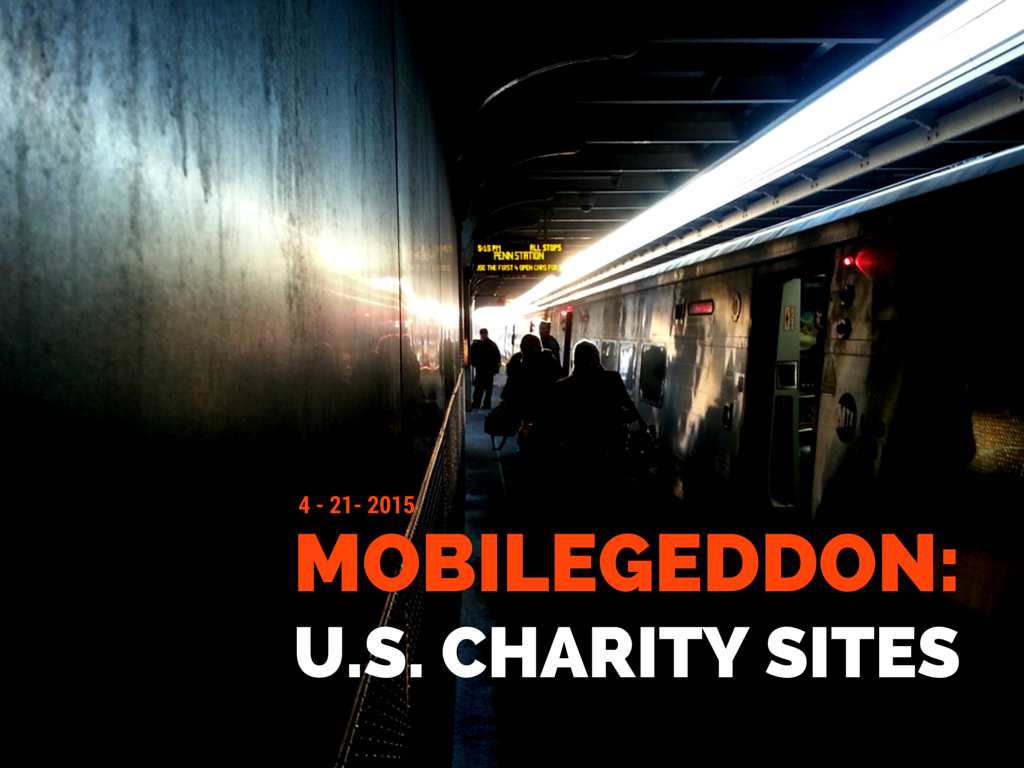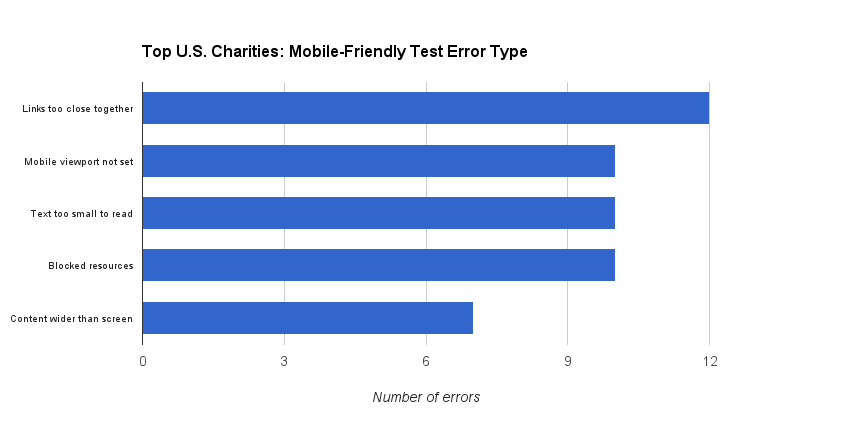April 14, 2015: Today Didit looks at the web sites of large U.S. charities to get a sense of the impact the 4/21/15 “mobilegeddon” algorithm changes will have on their mobile search visibility. This study is the latest in our pre-4/21/15 series of studies, which, to date, have included:
a) Major U.S. PR Firms (published 4/2/15)
b) Large cap companies on Long Island (published 4/6/15)
c) Major New York-based advertising agencies (published 4/15)
Methodology
Didit tested each U.S. charity URL using Google’s Mobile Friendly Test application page (https://www.google.com/webmasters/tools/mobile-friendly/) to see whether Google considers each site “mobile-friendly.” The error types causing any test failures were logged, and a screen capture was made of each report. Testing was begun and concluded on 4/12/2015.
Here is a summary of findings:
1. 73 percent (36) of the 49 U.S. charities surveyed are fully “mobile-friendly” according to Google’s definition.
2. The most common errors seen on the 13 charity sites failing Google’s Mobile Friendly test were:
a). Links spaced too closely together to be easily clicked on mobile devices. 12 sites had this error.
b) Mobile viewports not being set correctly. This error can cause the site to render in less than 100 percent of mobile display space. 10 failing charity sites had this error.
c) Text being set at a size too small to read on mobile devices. 10 failing sites had this error.
d.) Blocking of resources necessary for the Googlebot to correctly parse the resources referenced by the web page. 10 sites had this error.
e) Content wider than screen. This error can cause the site to become arbitrarily “cropped” when viewed on a mobile device. 7 charity sites had this error.
Analysis
 Charities use their web sites for a variety of purposes, including in many cases direct donation. Being “device-agnostic” (i.e. being equally accessible to any device chosen by users to access the site) would seem to be a reasonable corporate goal. And while the fact that a given charity fails to pass Google’s Mobile Friendly Test does not mean that it will be invisible on mobile devices, Google has indicated that poor showings on this test may result in less visibility in search results made from mobile devices under certain circumstances.
Charities use their web sites for a variety of purposes, including in many cases direct donation. Being “device-agnostic” (i.e. being equally accessible to any device chosen by users to access the site) would seem to be a reasonable corporate goal. And while the fact that a given charity fails to pass Google’s Mobile Friendly Test does not mean that it will be invisible on mobile devices, Google has indicated that poor showings on this test may result in less visibility in search results made from mobile devices under certain circumstances.
This is (or should) be a top-level organizational concern as mobile traffic — and searches made on mobile devices — continue to grow in importance. Emarketer.com has observed that “2015 will see mobile search reach the tipping point — the stage at which the majority of spend, organic traffic, and paid clicks comes from smart phones and tablets.”
Didit’s findings should not be cause for panic among charity site administrators. In many cases the actual problems causing a “Fail” on Google’s Mobile Test can be quickly resolved. However because charities have only one week to rectify these problems, charity senior management should take this issue seriously and make any corrections required in time for the 4/21/15 deadline. Such corrections can be made by the charity’s internal IT team or agency responsible for site maintenance.
- 10 Mistakes to Avoid When Using QR Codes for Marketing - September 20, 2023
- Kevin Lee on How AI Changes the SEO Landscape - August 31, 2023
- The Power of Compound Marketing: Kevin Lee Presents @ 1MediaWorld 2023 Global Conference - March 7, 2023


